
Kayak Modeling
Contracted to design a concept model of Lifetime's Kokanee tandem kayak
This was a complex SolidWorks surfacing model, there is not a straight line, nor a flat plane in the entire CAD model. All features flow from one to another with attention to manufacturing requirements of raft and release angles.
Interesting Challenge, Great Results
It all began with an idea, a paper napkin sketch. The design requirements was to have as many features designed into the body as possible.
3 Seating Positions
A requirement for the kayak design was to keep the craft balanced and stable for either placement of a single rider in the center of the craft (2), or allowing to seat 2 riders equally fore and aft (1) & (3). These three ergonomic seats flow from one to the next in a pleasing swoop design.
Footrests at the Right Locations
The design requirement of having comfortable footrests for three different seating locations for a wide range of different sized riders, children to large adults was accomplished by several full size mock-up prototypes that came directly from SolidWorks CAD designs.
Built-in Handles
Built-in handles placed in locations a rider would normally reach for, which added increased usability according to testers of the prototypes.
No Bottom Fin
Bottom fins or commonly called Skegs are a good method of direction control, but they are prone to breakage and damage. I performed extensive virtual hydrodynamic testing in CAD. After that, 1/10th models were machined to confirm the CAD model results.
The concept is to control the flow of the water at the aft section to stabilize the direction control of the kayak. It worked very well with very little drag.
Stackable
Several features were added to the haul in order to allow very secure connection between the kayaks while stacked. This feature worked very well with stacks at of 8 or more remaining stable.
On a side note, I was visiting a tourist lake location and a boat rental was using these kayaks. The owner stated that stackability was a very important requirement for product selection for his rental fleat. He thanked me for designing such a user friendly product.
CNC Prototypes
Real-world testing of the CAD design. I bought the added benefit of the ability to test the preliminary designs. Many physical prototypes were manchined to test the ‘fin-less’ design, stacking stability and help communicate more effectively design intent, decreasing time to market and a better product.
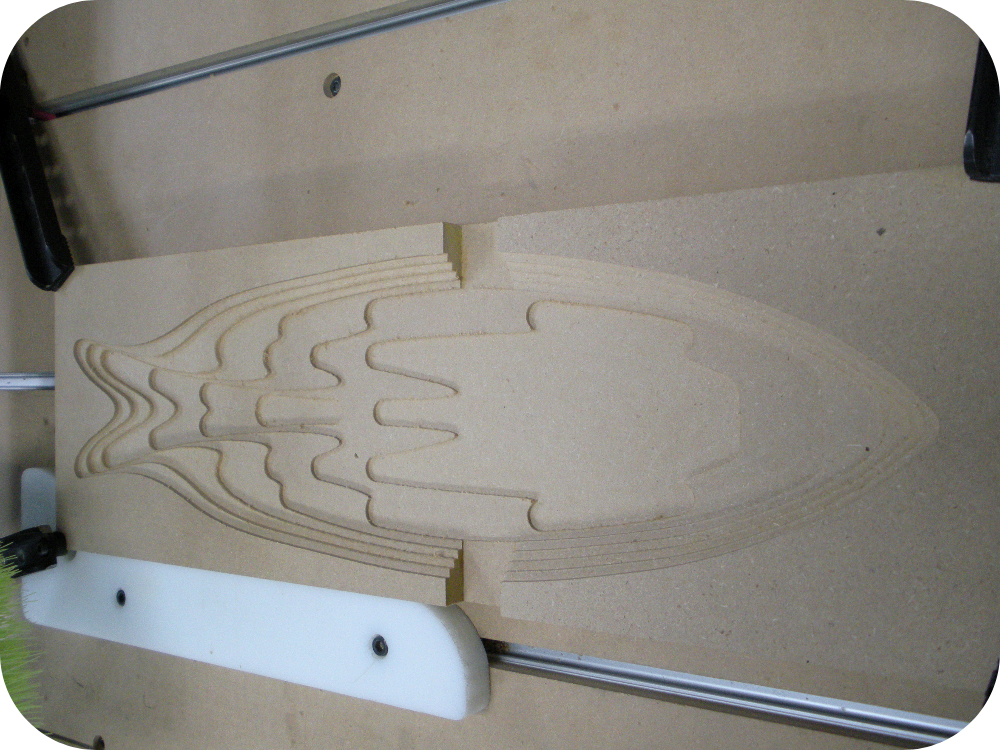
I created a great solution to the difficult task of fixturing (clamping) the work piece (part to be machined) by machining a perfect negative feature of the bottom.

First image is of the rough machining, this image shows the finished profile. Small holes were added and connected to a vacuum. This is called vacuum fixturing
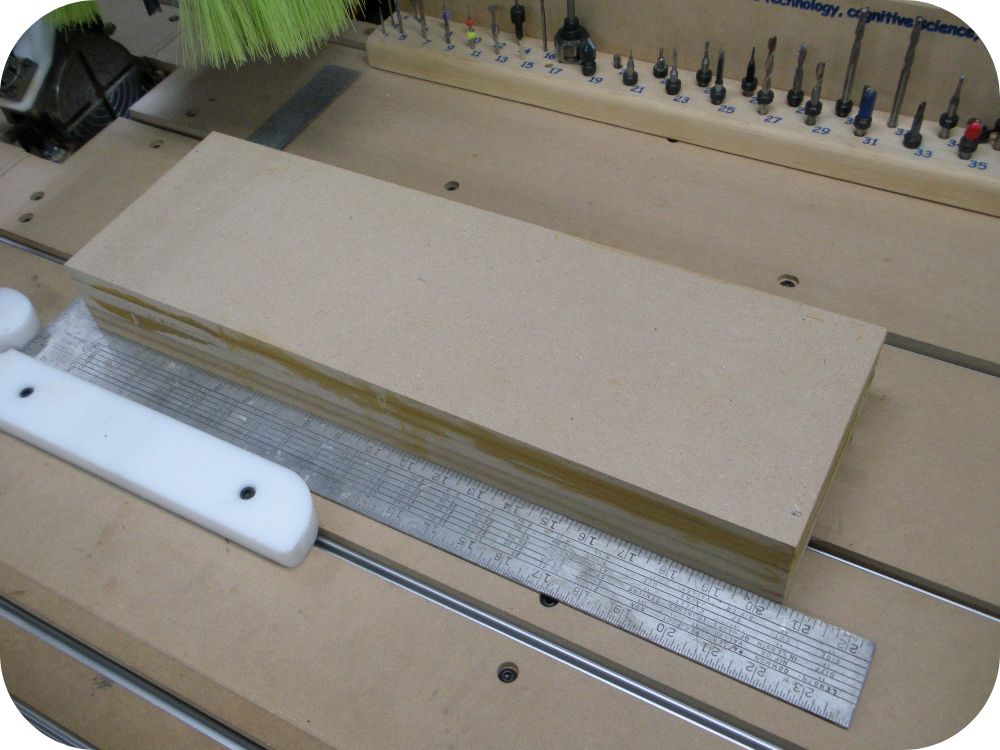
Once the vacuum fixture is made it is removed and bottom features will be machined out of this laminated block of MDF (Medium Density Fiberboard).
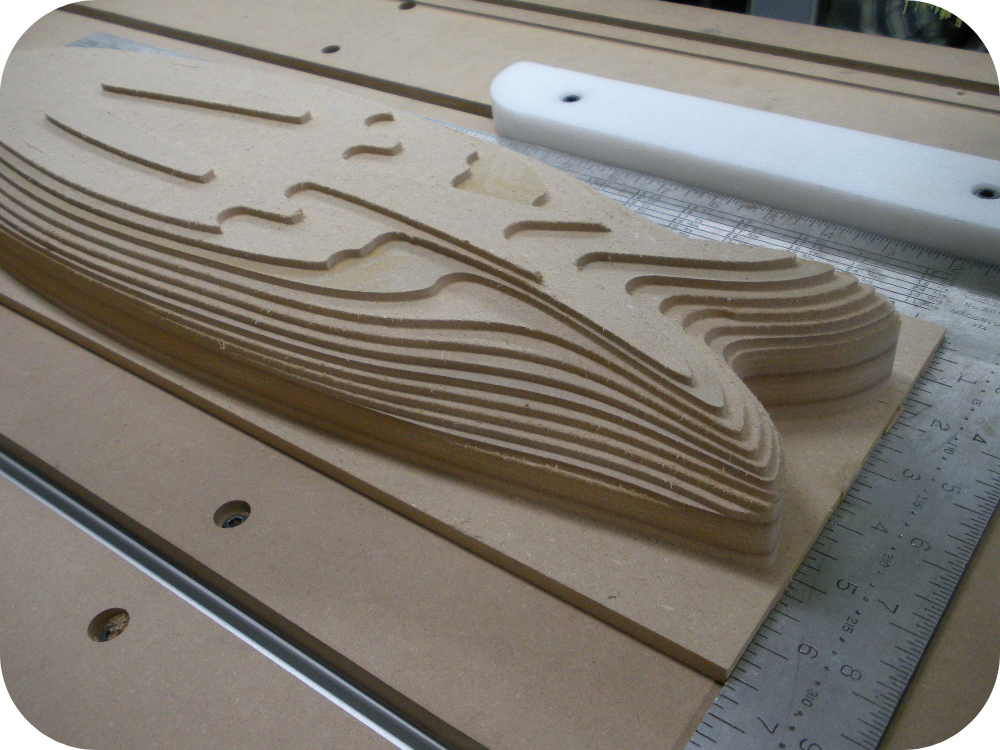
Starting to take shape. The rough machining removes the majority of the material.

The finish pass takes about two-thirds of the total machining time.
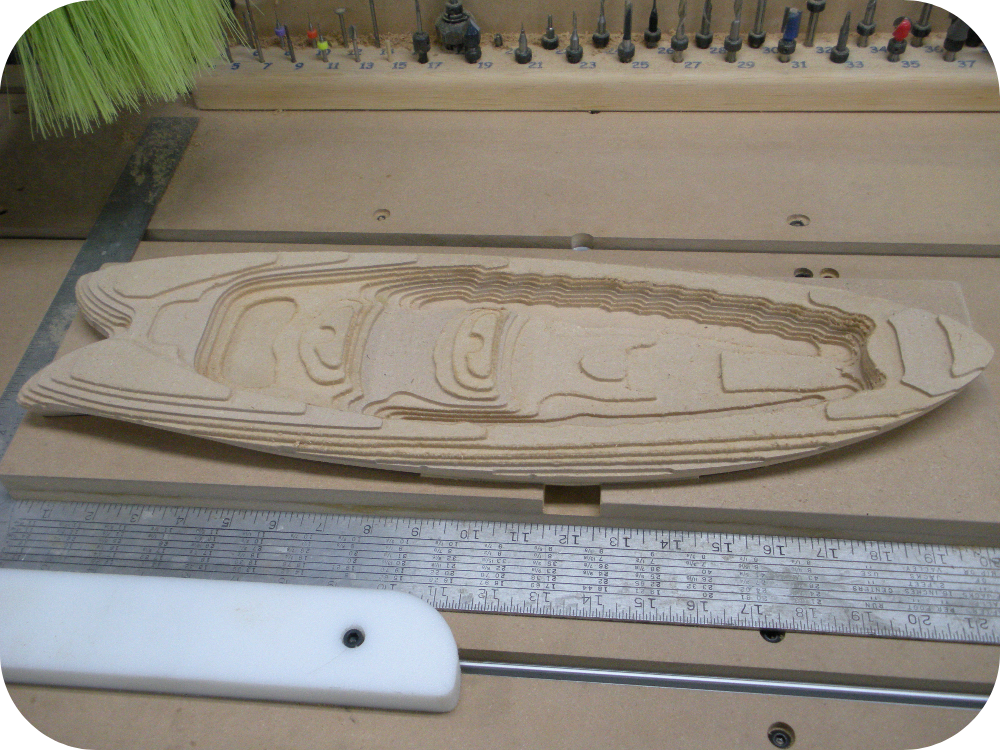
Once the bottom finishing is completed the vacuum fixture is mounted and the first roughing pass is done on the top..
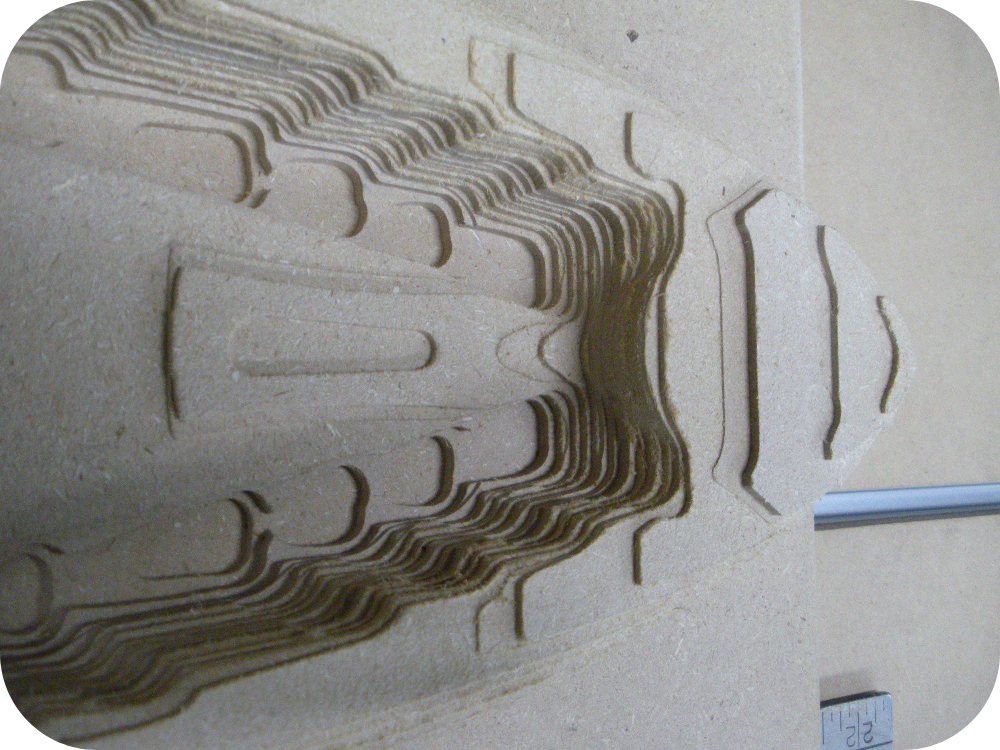
This model requires a second roughing pass using a smaller tool to get into all the deep pockets.
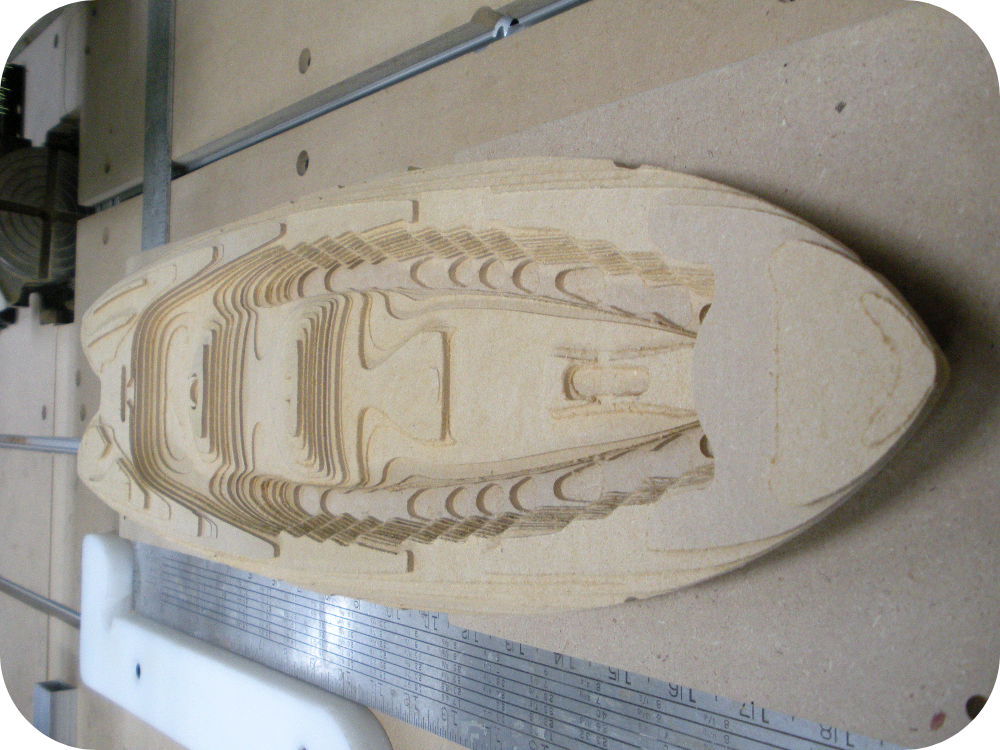
Another angle showing the completion of both roughing passes.
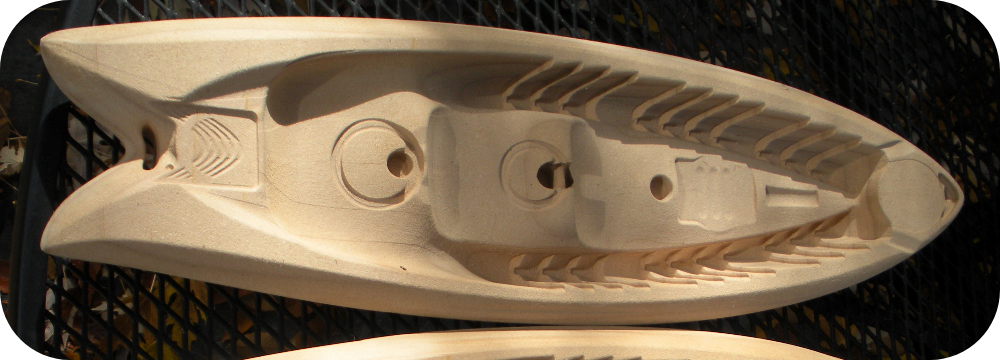
Showing the final part after the top finishing pass.
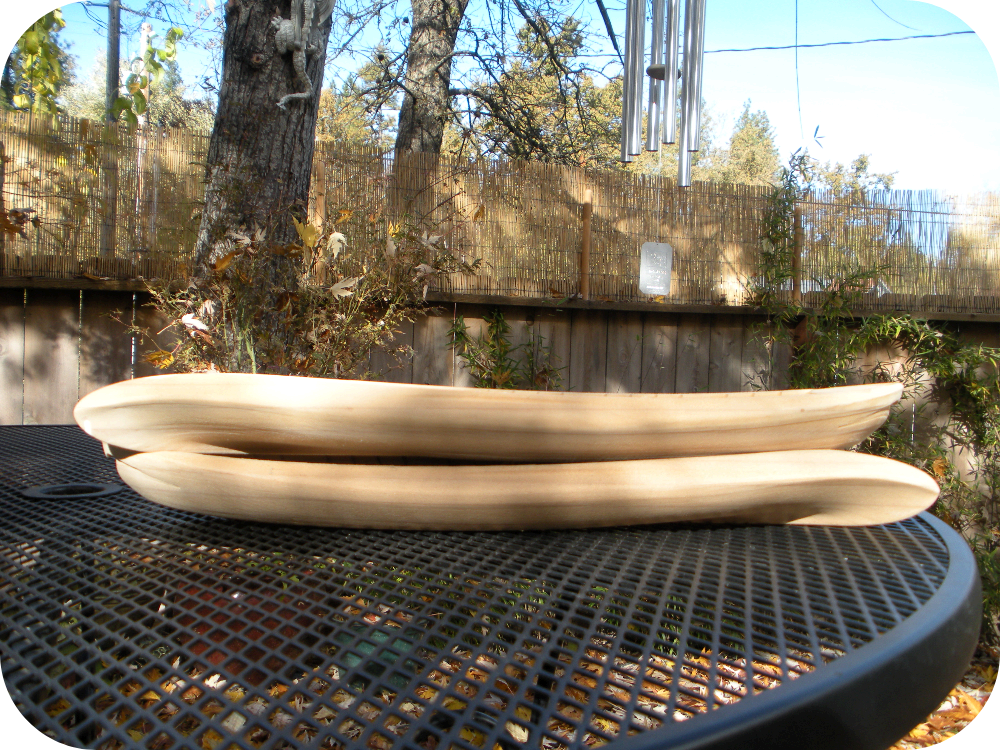
Scaled models demonstrating how well the kayaks can stack on top of each other.

Many of these models have been produced for testing and visualization.

The stacked kayaks require minimal space.








